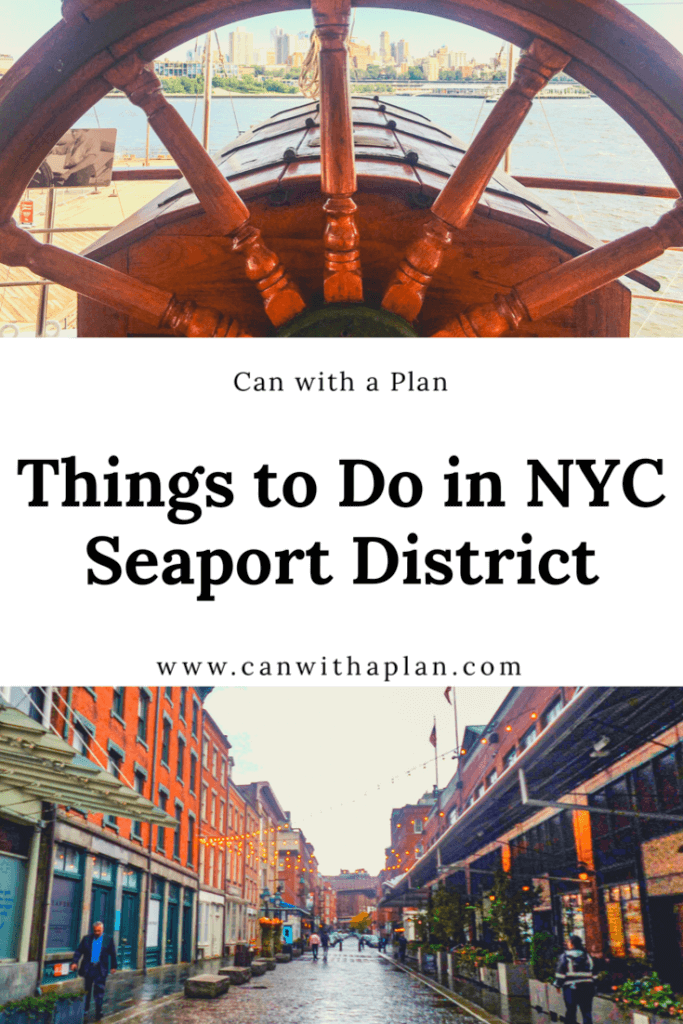On October 29, 2012, Hurricane Sandy struck New York City, causing unprecedented damage across all five boroughs. The superstorm, which began as a tropical wave in the Caribbean, caused 43 deaths and $19 billion of damage in the city. Approximately 17 percent (51 square miles) of New York City’s total land mass was flooded, and a quarter of buildings were without power for days.

Lower Manhattan was hit especially hard by the storm, forcing many shops and restaurants in the area to close. Prior to Sandy, South Street Seaport was a place that locals generally avoided and was mostly filled with tacky souvenir shops and tourists. Over the last few years, however, the neighborhood has emerged from the flooding as a new creation as the Howard Hughes Corporation has worked to transform the rechristened Seaport District into a destination that both residents and visitors can enjoy.

The waterfront esplanade extends along the East River, which is not actually a river, but a saltwater estuary connecting to the sea. Out on the piers, the cool ocean breeze and smell of salt in the air remind you that Manhattan really is an island surrounded by water. Waves lap against the wooden piles as you watch the boats passing by. You can even get a taste of the sea at the new Jean-Georges Vongerichten restaurant, The Fulton, which has fresh fish delivered by boat every morning at the end of Pier 17. The historic Tin Building next to the pier that formerly served as the Fulton Fish Market is being refurbished piece-by-piece into a seafood-themed food hall. The 50,000 square-foot space, which will house numerous mini-restaurants with different food concepts, will also be run by Vongerichten and is expected to open in 2021.

Walking under the FDR and across South Street, you reach a collection of brick buildings from the early 19th-century. These historic landmarks are some of the oldest structures still standing in Manhattan. The Federal-style architecture and cobblestone streets transport you into the past. At the Seaport Museum in Schermerhorn Row, you can view artifacts and read stories about the port’s history. The museum includes a fleet of five historic vessels docked at Pier 16 where you can tour a lightship and cargo ship. There is also Bowne & Co., Printing Office, which still uses 19th century letterpresses to create small-batch custom print jobs.



The modern side of Seaport offers a unique mix of experiences with shopping, restaurants, bars, entertainment, and culture. The new structure on Pier 17 that replaced the old mall has a rooftop that serves as a concert venue in the summer and an ice skating rink in the winter. The complex also features restaurants by top chefs David Chang and Andrew Carmellini. The revamped Fulton Market Building is anchored by 10 Corso Como, a Milan-based luxury concept store that combines fashion, food, and art to create a “slow shopping” experience. Above the store is the iPic theater, an upscale cinema that serves gourmet snacks and cocktails to guests in plush leather recliners. A calendar of free events in the District runs throughout the year filled with activities such as pop-up art exhibits, outdoor movies, fitness classes, and musical performances.

Some links in this article may be affiliate links, which means that if you purchase through them, I receive a small commission at no extra cost to you, and in many cases you receive a special discount. Thanks for your support!
Like this post? Pin it!


